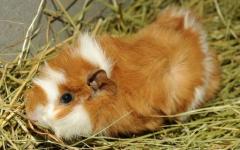It is impossible to achieve success in figure skating if you are overweight. But the specifics of this sport require a huge amount of energy, so a balanced and good nutrition necessary for athletes.
How do figure skaters eat? Do they have a special diet and what does it include?
Organization of figure skaters' diet
According to trainers working with figure skaters, extra pounds appear due to improper distribution of nutrients. A skater must not only be physically tough and have well-developed muscles, but also be flexible and flexible.Skaters get carbohydrates for endurance from fruits, vegetables, cereals and pasta made from durum wheat. Proteins give strength to muscles. They are found in lean varieties of fish, meat and poultry, low-fat fermented milk and dairy products. A liquid diet maintains the flexibility of the body, and foods high in calcium strengthen bone tissue and stimulate the conduction of nerve impulses. Therefore, soups, nuts and dairy products must be included in the diet of athletes.
The composition of the diet and its quantity are certainly important. But the diet is no less important. Skaters eat often, but in small portions, and at the request of coaches, lunch should be two hours before the start of training, so that digestion does not interfere with classes. For each athlete, the diet is compiled individually, taking into account gender, age, direction of the training process and other factors.
And yet there are cases when, before a performance, an athlete’s weight exceeds the permissible values. In this case, an extreme diet is used, which, of course, is not approved by either trainers or professional nutritionists. However, it is very effective.
Getting out of bed after sleep, you need to drink 250 ml mineral water. It should be without gas.
For breakfast you are allowed to eat two glasses of pure bran. You can add kelp to them. Drink 500 ml of green tea without sugar.
The second breakfast menu consists of only two green apples.
Lunch consists of two rye crackers, 250 ml of kefir, low-fat only.
Before afternoon snack, you can snack on a large orange and 100 grams of low-fat cottage cheese.
The afternoon snack menu consists of four grain breads (preferably buckwheat), 250 ml of black tea without sugar.
Before dinner, you can have a snack with 100 grams of low-fat cottage cheese.
Dinner can consist of 100 grams of boiled beef or white poultry or two boiled eggs.
In two to three weeks of such a diet, you can get rid of 15-20 kilograms of excess weight, but losing it quickly can have a negative impact on your health, so it is better to be prudent and lose weight gradually.
In the 2007/2008 season. we carried out research on the analysis of the actual nutrition of young athletes on the basis of the St. Petersburg Youth Sports School of the Olympic Reserve in Figure Skating. Data on actual nutrition were collected based on the nutrition diaries completed by the athletes. To calculate the parameters of the chemical composition we used computer program“Organization of nutrition in youth sports schools and educational institutions”, developed at St. Petersburg Research Institute of Physical Culture on the basis of tables on the chemical composition of food products and ready-made dishes.
The hygienic characteristics of nutrition were carried out in comparison with the currently existing recommended values for the consumption of basic nutrients and energy for young athletes (Order No. 155 of February 25, 2004 “On the standards for providing a minimum daily diet for students of Olympic reserve schools”). In table 30, 31 and 32 show the correspondence of the actual content of nutrients and energy to the recommended values.
Table 30 Correspondence of the content of nutrients and energy value of the daily diet of young skaters to the recommended values (%)
As follows from the table, young skaters' energy needs are satisfied with food by 50.3-63%, in - by 42.3-62.3%, in - by 63-85.2%, in - by 44-49 ,1%.
A lack of basic nutrients (,) and energy in the diet inevitably leads to a deficiency of such essential food components as, and (see Tables 31 and 32), which in our study was confirmed by biochemical research data.
Table 31 Provision of vitamins in the daily diet of young figure skaters in comparison with the recommendations of St. Petersburg Research Institute of Physics (%)
|
Pair skating (m) | |||||||
|
Pair skating (w) | |||||||
|
Single skating (m) | |||||||
|
Single skating (w) |
Table 32 Provision of minerals in the daily diet of young skaters in comparison with the recommendations of St. Petersburg Research Institute of Physics (%)
|
Study groups of athletes | |||||
|
Pair skating (m) | |||||
|
Pair skating (w) | |||||
|
Single skating (m) | |||||
|
Single skating (w) |
When comparing the vitamin composition of the diet with the recommended intake values, an insufficient content of all the studied vitamins, including PUFAs, was revealed in the figure skaters’ diet.
A study of the mineral composition of food revealed a deficiency in nutrition of all the studied mineral substances.
Based on the totality of the studies conducted, typical errors found in the diet of figure skaters were identified:
- reduction in the energy value of the daily diet;
- insufficient content of total carbohydrates with a violation of the structure of their consumption (excess - and);
- insufficient content of proteins of both plant and animal origin in the diet;
- insufficient consumption of animal and plant fats;
- insufficient content .
and as a consequence:
- insufficient intake of vitamins (vitamin A, B1, B2, C, etc.);
- deficiency of macro- and microelements (calcium, phosphorus, magnesium, iron, etc.).
Based on the totality of the studied indicators, we concluded that insufficient is determined in all skaters, regardless of the chosen type of figure skating.
Algorithm for compiling diets for figure skaters
The main goal of creating diets for athletes is to achieve maximum compliance between the possible influence of the diet on the body of a young athlete and the tasks set by the coach for a given period of the training process.
- Calculation of daily averages in order to determine the energy value of the diet.
- Determination of the ratio of basic nutrients in accordance with a specific pedagogical task for a specific period of training of an athlete. To do this, it is necessary to know the structure of training microcycles (MCs) in the annual cycle of training athletes, pedagogical tasks for individual microcycles, and duration. Each day of the microcycle must correspond to a specific diet.
- Compiling a set of products that provides the calculated calorie content of the diet and the ratio of nutrients in it. To fulfill this condition, it is recommended to be guided by the approximate sets of products developed by St. Petersburg Research Institute of Physical Culture (Order No. 155 of February 25, 2004 “On the standards for providing a minimum daily diet for students of Olympic reserve schools”), or Appendix 9.
- Creation of a technological card index of ready-made dishes (layout cards).
- Compiling a diet from a card index of layout cards with its distribution throughout the day (4-5 meals are recommended) depending on the time and number of training sessions.
An example of compiling a ten-day menu of four meals a day for a training camp (ration ShSh-2) is given in Appendix 14.
General nutritional principles for weight loss for figure skaters
In our opinion, one of the reasons typical mistakes found in the diet of figure skaters is the restriction of food consumption associated with the fear of gaining excess weight. This is especially true for girls and young women. We have already written that any lack of energy, proteins, fats and carbohydrates in the diet inevitably leads to a deficiency of such essential food components as PUFAs, vitamins and minerals, which ultimately leads to decreased immunity, injuries, increased morbidity and decreased athletic performance. Therefore, when a young figure skater or figure skater is faced with the task of reducing body weight or maintaining the recommended one, we must correctly formulate the diet so that, with a reduced calorie content, the food contains an adequate amount of all essential food components, and the athlete can maintain the achieved level of physical fitness throughout this period.
Nutrition principles for weight loss:
- Gradually reduce the energy value of the diet, but not below the energy consumption for basal metabolism (1200 kcal).
- Increase the protein quota in the diet to 18-20% of the daily calorie intake (but not more than 3 g/kg body weight).
- As full source use protein: beef and chicken without visible fat, low-fat fish (cod, pike, navaga, pike perch), rabbit, veal, low-fat cottage cheese, eggs. Combine meat with raw vegetables and leafy greens.
- Limit the fat quota to 26-30% of the daily calorie intake from animal fat.
- Eliminate or limit animal fat from your diet ( butter, cream, sour cream, offal, lard, sausages).
- Increase the consumption of vegetable fats (up to 20-25 g per day). They are recommended for use in salad dressings and vinaigrettes, but not for frying foods.
- Maintain a carbohydrate quota of up to 50-56% of the daily caloric intake while limiting high carbohydrates (sugar, sweets, confectionery, premium flour products, potatoes, white rice, corn flakes).
- Increase the consumption of fruits and berries containing carbohydrates with a low glycemic index: apples, grapefruits, oranges, peaches, plums, lemons, currants, gooseberries, cranberries, and juices from them.
- Maintain the frequency of meals - at least 4-5 times a day.
- The main food consumption should be in the morning and afternoon (at breakfast and lunch - 2/3 of the total daily calorie intake, at dinner - 1/3, respectively).
- It is recommended that the evening meal consist mainly of protein products (lactic acid, low-fat varieties meat, eggs, seafood).
- The time between dinner and the start of bed should be at least 3 hours.
- Limit foods that stimulate appetite (overeating) in your diet: strong broths, pickles, marinades, smoked foods, fried foods, spicy seasonings, alcohol.
- To prevent overeating, you need to eat slowly, chewing your food thoroughly.
- The use of diets with limited energy intake (hypocaloric nutrition).
For an approximate weekly hypocaloric diet aimed at reducing the body weight of figure skaters, see Appendix 15. This diet prescribed for no more than 1 month.
As an alternative to energy-restricted diets, diets can be used fasting days. Most of them are inferior in energy value and chemical composition, so they are prescribed for 1-2 days and no more than 1-2 times a week.
Methodology for conducting contrast, or fasting, days
Contrast, or fasting, days are carried out with the aim of restructuring metabolism and stimulating the mobilization and use of energy resources from fat depots, which leads to weight loss. Increased diuresis and improved bowel movements these days lead to a more or less significant decrease in body weight and contribute to the removal of metabolic end products from the body.
A fasting diet is usually prescribed on a day off. Meals are taken 5-6 times a day. To avoid irritation of the food center, you should not eat at a common table. On this day, it is advisable to ensure physical rest - excessive physical stress is unacceptable. Light to moderate housework is permitted. It is advisable to plan your daily routine in advance, including spending time in the fresh air.
If you feel hungry, accompanied by severe weakness and dizziness, it is recommended to drink tea with sugar, jam or honey.
When choosing a menu for a contrasting day, you should be guided by your personal tolerance to the offered food products diet and individual taste. At the initial stage, preference should be given to diets with the highest energy value (higher calorie content) - meat, fish, cottage cheese. In the future, other types of diets (fruit and vegetable, dairy) or double fasting days can be used: for example, first a meat day is prescribed, and then an apple day (Appendix 16).
One of the methods that helps to correct and maintain the recommended body weight is changing eating behavior, i.e. developing the habit of eating right.
Appendix 14 Approximate ten-day menu of four meals a day for a training camp for figure skaters
Day 1, menu
|
Name of dish |
Weight of the finished dish, g |
Chemical composition |
|||
|
Proteins, g |
Fats, g |
Carbohydrates, g |
Calorie content, kcal |
||
|
BREAKFAST |
|||||
|
Tea with sugar and lemon | |||||
|
Hercules milk porridge | |||||
|
Natural two-egg omelette | |||||
|
Butter bun | |||||
|
Fruits (peaches) | |||||
|
TOTAL | |||||
|
DINNER |
|||||
|
Assorted vegetables | |||||
|
Olivier salad | |||||
|
Chicken soup with vermicelli | |||||
|
Mashed potatoes | |||||
|
Fruits (pears) | |||||
|
TOTAL | |||||
|
AFTERNOON SNACK |
|||||
|
Curd cheese | |||||
|
Blend "Tropical" | |||||
|
TOTAL | |||||
|
DINNER |
|||||
|
Tea with sugar and lemon | |||||
|
Grated carrots with sugar | |||||
|
Crumbled buckwheat porridge | |||||
|
Fruits (apples) | |||||
|
Bee honey | |||||
|
TOTAL | |||||
Food set No. 1 (calorie content - 3500 kcal)
|
No. |
Products |
Product quantity (net, g) |
|
Meat products (cooked, semi-smoked, hard-smoked, pork-smoked sausages): sausages | ||
|
Egg (dietary) | ||
|
Vegetable oil (sunflower, corn, etc.) | ||
|
Milk (whole) | ||
|
Dairy products: | ||
|
cottage cheese n/w | ||
|
Potato | ||
|
Cereals, flour: Hercules flakes | ||
|
vermicelli | ||
|
onion/leek | ||
|
parsley dill | ||
|
fresh/salted cucumbers | ||
|
peas (canned) | ||
|
Fresh fruits (berries, citrus fruits assorted): | ||
|
Canned fruits | ||
|
Dried fruits (dried apricots, raisins, prunes) | ||
|
Nuts (walnuts, almonds, cashews, hazelnuts) | ||
|
Jam, jam, marmalade: jam | ||
|
Rye/wheat bread | ||
Day 2, menu
|
Name of dish |
ready dish, g |
Chemical composition |
|||
|
Carbohydrates, g |
Calorie content, kcal |
||||
|
BREAKFAST |
|||||
|
Tea with sugar and lemon | |||||
|
Rice porridge milk | |||||
|
Sausage sandwich s/c | |||||
|
Pancakes with cottage cheese | |||||
|
Condensed milk | |||||
|
Fruits (apples) | |||||
|
TOTAL | |||||
|
DINNER |
|||||
|
Assorted vegetables | |||||
|
Fresh cabbage with herbs | |||||
|
Bean soup with m/k broth | |||||
|
Meatloaf, minced meat. egg | |||||
|
Crumbled buckwheat porridge | |||||
|
Fruit compote | |||||
|
Fruits (nectarines) | |||||
|
TOTAL | |||||
|
AFTERNOON SNACK |
|||||
|
Blend "Tropical" | |||||
|
Baking with honey | |||||
|
TOTAL | |||||
|
DINNER |
|||||
|
Tea with sugar and lemon | |||||
|
Mashed potatoes | |||||
|
Squash Cavier | |||||
|
Corn (canned) | |||||
|
Fruits (pears) | |||||
|
TOTAL | |||||
Food set No. 2 (calorie content - 3500 kcal)
|
Products |
Product quantity (net, g) |
|
|
Meat (veal, 1st grade beef tenderloin, pork, lamb) | ||
|
By-products (beef): tongue, liver, kidneys | ||
|
Meat products (cooked, semi-smoked, hard-smoked, pork-smoked sausages): semi-smoked sausage | ||
|
Fish and fish products (fresh, frozen, salted fish) | ||
|
Poultry (chickens, turkey, chicks) | ||
|
Egg (dietary) | ||
|
Butter, including ghee | ||
|
Milk (whole) | ||
|
Dairy products: | ||
|
cottage cheese n/w | ||
|
condensed milk | ||
|
Potato | ||
|
Fresh vegetables, legumes, herbs (assorted): | ||
|
squash Cavier | ||
|
onion/leek | ||
|
parsley dill | ||
|
fresh cucumbers | ||
|
corn (canned) | ||
|
used cabbage | ||
|
nectarines | ||
|
Canned fruits | ||
|
Fruit juices/mineral water | ||
|
Sugar, candies, marmalade, halva: sugar | ||
|
Jam, jam, marmalade | ||
|
Flour confectionery products (cookies, biscuits, gingerbread, etc.): baked goods | ||
|
Rye/wheat bread | ||
Day 3, menu
|
Name of dish |
Weight of the finished dish, g |
Chemical composition |
|||
|
Carbohydrates, g |
Calorie content, kcal |
||||
|
BREAKFAST |
|||||
|
Cocoa with milk | |||||
|
Buckwheat milk porridge | |||||
|
A cheese sandwich | |||||
|
Boiled egg | |||||
|
Bun with jam | |||||
|
"Fruits (pears) | |||||
|
TOTAL | |||||
|
DINNER |
|||||
|
Vinaigrette with fish (canned) | |||||
|
Fresh cabbage with herbs | |||||
|
Pickle soup for chicken. broth | |||||
|
Navy pasta | |||||
|
Compote from St. apples | |||||
|
Fruit (kiwi) | |||||
|
TOTAL | |||||
|
AFTERNOON SNACK |
|||||
|
Almonds in yogurt | |||||
|
Baking with chocolate | |||||
|
TOTAL | |||||
|
DINNER |
|||||
|
Tea with sugar and lemon | |||||
|
Rice balls | |||||
|
Korean carrots | |||||
|
Olivier salad | |||||
|
Fruits (apples) | |||||
|
TOTAL | |||||
Food set No. 3 (calorie content - 3500 kcal)
|
Products |
Product quantity (net, g) |
|
|
Meat (veal, 1st grade beef tenderloin, pork, lamb) | ||
|
By-products (beef): tongue, liver, kidneys | ||
|
Meat products (cooked, semi-smoked, hard-smoked, pork-smoked sausages) | ||
|
Fish and fish products (fresh fish, frozen fish, canned fish) | ||
|
Poultry (chickens, turkey, chicks) | ||
|
Egg (dietary) | ||
|
Butter, including ghee | ||
|
Vegetable oil (sunflower, olive, corn, etc.) | ||
|
Milk (whole) | ||
|
Dairy products: | ||
|
cottage cheese n/w | ||
|
condensed milk | ||
|
Potato | ||
|
pasta | ||
|
pearl barley | ||
|
Fresh vegetables, legumes, herbs (assorted): | ||
|
onion/leek | ||
|
parsley dill | ||
|
pickles | ||
|
peas (canned) | ||
|
used cabbage | ||
|
Fresh fruits (berries, citrus fruits assorted): | ||
|
Canned fruits | ||
|
Dried fruits (dried apricots, raisins, prunes) | ||
|
Fruit juices/mineral water | ||
|
Nuts (walnuts, almonds, cashews, hazelnuts) | ||
|
Sugar, candies, marmalade, halva: sugar | ||
|
Jam, jam, marmalade | ||
|
Flour confectionery products (cookies, biscuits, gingerbreads, etc.): baked goods | ||
|
Rye/wheat bread | ||
Day 4, menu
|
Name of dish |
Weight of the finished dish, g |
Chemical composition |
|||
|
Carbohydrates, g |
Calorie content, kcal |
||||
|
BREAKFAST |
|||||
|
Tea with sugar and lemon | |||||
|
Millet milk porridge | |||||
It is difficult to find anyone in Russian figure skating who is not as lucky as Maria Sotskova. It is customary to feel sorry for Evgenia Medvedeva, who won everything and everyone, but lost gold to Alina Zagitova at the Olympic Games in Pyeongchang. Sotskova has something to answer. At the junior level, she was always among the leaders: second place at the Youth Championships olympic games, second at the Junior World Championships, first and second places in the final of the Junior Grand Prix. And after switching to adult skating in the 2017/18 season, Maria became second in the Grand Prix final, beating Caitlin Osmond, Carolina Costner, Satoko Miyahara and Wakaba Higuchi, losing only to Zagitova.
But at other major competitions, something constantly goes wrong: two fourth places at the European Championships, two eighth places at the World Championships, eighth place at the Olympics in Pyeongchang, a disastrous 16th place at the last Russian Championships... In the 2018 season /19 Sotskova has never been on the podium.
But if another would give up, then Maria is definitely from a different breed. She continues to fight and do what she loves most. Figure skating fans always use Sotskova as an example when it comes to preparing for competitions. Ideal figure! How does a 19-year-old figure skater manage to look like that? She shared her secrets with her followers on Instagram, answering the questions that concern them most.
– Are you vegan?
– I eat meat and all natural products, I have a balanced diet! I'm just trying to eat right. Most often I have two meals. I definitely have breakfast. ALWAYS! Whether I have lunch or dinner depends on how busy I am. Whatever one may say, for balanced nutrition meat is needed. I really love vegan recipes, but I’m not ready to become a vegan yet.
– Have you ever lost your temper?
- Certainly! Constant struggle with yourself. Now I began to understand that these moments of pleasure are not worth the torment after.
– How to overcome constant breakdowns?
– You can’t limit yourself! If you want a chocolate bar, it’s better to eat it, but a small one, than to limit yourself for a long time, and then break down and take out the candy store. Useful replacements are what you can use to save yourself.
– Do you ever feel very hungry?
– Yes, especially after training. You need to be able to distract yourself and keep yourself busy with something so as not to constantly think about your hunger. Is it difficult to stick to a diet? This is a continuation of working on yourself, of course, it is harder than uncontrolled eating.
– How many hours before bedtime do you not eat?
– I try not to have dinner at all, but if I do eat, then at least four hours before bedtime.
– What do you usually have for breakfast?
– Breakfast is always the most favorite and long-awaited meal of the day. (laughs). I can’t restrain myself here. The main thing is to understand how many kilocalories will remain for the next meal. For breakfast, I really like porridge, cheesecakes, omelettes and pastries, especially if I prepared it myself.
– Is it hard to give up sweets and burgers?
– You can always find a useful replacement. I have a lot of simple, quick, and most importantly – very tasty and healthy recipes. I will gradually post them on my page.
- Do you like coffee? If so, which one?
– I really like raf. Now I hardly drink coffee at all.
– Do you like juices?
– I prefer water with lemon or fruit.
– How much water do you drink?
– One or two glasses of water on an empty stomach in the morning. 20 minutes before each meal, one glass. After training, I drink enough water to replenish my expenses.
– Do you eat differently before competitions?
– Before competitions I lose 0.5–1 kg. I practically don’t change my diet, I just add a little more carbohydrates for energy. Just a little bit, because sometimes they cause me the opposite reaction (lethargy and drowsiness).

– How do you calculate your ideal weight?
– I heard the theory about “height minus 120 = ideal weight.” I use this formula and get a weight that is ideally comfortable for me. But this is so individual that I do not presume to say that this is correct. Every person knows their ideal weight and appearance at this weight, so everyone has their own formula.
– How to lose weight quickly?
– A calorie deficit and an active lifestyle will save us all. I constantly count calories.
– Masha, do you always eat the right things for 1000 kilocalories? Or do you allow harm?
- Anything can happen. But I’m fighting with myself, and such “anything can happen” happens much less often.
– Has it ever happened when you did everything, but the weight didn’t go away?
- It happened! For example, you need to lose two or three kg. At first you lose weight quite quickly, and then it either comes back or remains a dead weight. The main thing is not to stop exercising and stick to the diet, after some time the weight will go away. Therefore, patience and work...
– What products are necessarily present in the diet?
– Meat, vegetables, fruits, eggs, dairy products, nuts, cereals.
- How many hours do you sleep?
– Usually seven or eight, but sometimes the body malfunctions: I can wake up at 5 in the morning and not fall back to sleep. And sometimes I sleep for 12 hours.
– What is it like to have such long legs and a beautiful waist?
– I work a lot on my body and love it. I wish everyone to love themselves and work on themselves.
– How much do you study a week?
– I have six training days a week. Sometimes I go for a run at the end of the day.
– How often do you run?
– Depends on the tasks and mood. Sometimes I run every day, sometimes three times a week for 40–60 minutes. Warm-up running does not count, it is mandatory every day.
– How to fall in love with running?
“I used to not like running, but now this is the most valuable time when I can be alone with my thoughts. I often get new ideas while running. I also often imagine running away from my extra pounds. (laughs).
– How to train to lose weight and not build muscle?
– Do not lift heavy weights. Work at a certain heart rate to burn fat. Each one is individual. Eat right before and after training.
- When will you get married? No name?
– I’m not sure that this question is #aboutlifestyle (laughs). But I'm not going to yet.
It is impossible to achieve success in figure skating if you are overweight. But the specifics of this sport require a huge amount of energy, so a balanced and nutritious diet is necessary for athletes.
How do figure skaters eat? Do they have a special diet and what does it include?
Organization of figure skaters' diet
According to trainers working with figure skaters, extra pounds appear due to improper distribution of nutrients. A skater must not only be physically tough and have well-developed muscles, but also be flexible and flexible.Skaters get carbohydrates for endurance from fruits, vegetables, cereals and pasta made from durum wheat. Proteins give strength to muscles. They are found in lean varieties of fish, meat and poultry, low-fat fermented milk and dairy products. A liquid diet maintains the flexibility of the body, and foods high in calcium strengthen bone tissue and stimulate the conduction of nerve impulses. Therefore, soups, nuts and dairy products must be included in the diet of athletes.
The composition of the diet and its quantity are certainly important. But the diet is no less important. Skaters eat often, but in small portions, and at the request of coaches, lunch should be two hours before the start of training, so that digestion does not interfere with classes. For each athlete, the diet is compiled individually, taking into account gender, age, direction of the training process and other factors.
And yet there are cases when, before a performance, an athlete’s weight exceeds the permissible values. In this case, an extreme diet is used, which, of course, is not approved by either trainers or professional nutritionists. However, it is very effective.
Getting out of bed after sleep, you need to drink 250 ml of mineral water. It should be without gas.
For breakfast you are allowed to eat two glasses of pure bran. You can add kelp to them. Drink 500 ml of green tea without sugar.
The second breakfast menu consists of only two green apples.
Lunch consists of two rye crackers, 250 ml of kefir, low-fat only.
Before afternoon snack, you can snack on a large orange and 100 grams of low-fat cottage cheese.
The afternoon snack menu consists of four grain breads (preferably buckwheat), 250 ml of black tea without sugar.
Before dinner, you can have a snack with 100 grams of low-fat cottage cheese.
Dinner can consist of 100 grams of boiled beef or white poultry or two boiled eggs.
In two to three weeks of such a diet, you can get rid of 15-20 kilograms of excess weight, but losing it quickly can have a negative impact on your health, so it is better to be prudent and lose weight gradually.
A career in figure skating and excess weight are completely incompatible concepts. At the same time, this sport requires you to expend an impressive amount of energy, so athletes’ nutrition must remain balanced and nutritious. So what is the notorious figure skater diet and does it really exist? We invite you to find out the answer to this interesting question.
Proper diet for skaters
Trainers working with figure skaters believe that the appearance of extra pounds can only be caused by improper distribution of nutrients. Figure skating requires athletes not only to have physical endurance and well-developed muscles, but also excellent flexibility. Endurance is unthinkable without carbohydrates - figure skaters get them by eating fruits, vegetables, cereals and pasta from durum wheat. Muscle strength directly depends on the intake of proteins from food - their optimal sources are lean varieties of fish, meat and poultry, as well as low-fat fermented milk and dairy products. Body flexibility can be maintained with a liquid diet. Since skaters put themselves at risk of falls at every training session, which can cause fractures and sprains, they have to enrich their diet with foods containing calcium. By the way, this element not only strengthens bone tissue, but also stimulates the conduction of nerve impulses. The main sources of calcium are dairy products and nuts.
Diet is of great importance - skaters eat in small portions, but quite often. Coaches insist that their players eat at least a couple of hours before training so that the digestion process does not interfere with full exercise. These are just general recommendations. In fact, each athlete’s diet is compiled strictly individually, all factors are taken into account: gender, age, direction of the training process, etc.
Extreme Skater Diet (Skater Diet)
There is also an extreme diet option that allows you to adjust your weight before performances. Most likely, it does not excite either trainers or professional nutritionists. At the same time, the effectiveness of this weight loss technique is beyond doubt.
Skaters diet menu
After waking up: 250 ml still mineral water
Breakfast: 1/2 tbsp. bran (pure or with kelp), as well as 500 ml of unsweetened green tea
Second breakfast: green apples – 1-2 pcs.
Lunch: rye crackers – 2 pcs. and 250 ml low-fat kefir
Snack: large orange and low-fat cottage cheese (no more than 100 g)
Afternoon snack: grain breads (buckwheat is preferred) – 4 pieces, as well as 250 ml of unsweetened black tea
Snack: low-fat cottage cheese (no more than 100 g)
Dinner: boiled beef or white poultry meat - 100 g (the next day the meat can be replaced with boiled eggs - 2 pcs.)
The duration of the diet should not exceed two to three weeks. Weight loss is 15-20 kg.
The diet of figure skaters in the first version does not cause any complaints, which cannot be said about its extreme variety, which provokes excessively rapid weight loss. Be reasonable and don't chase results.









